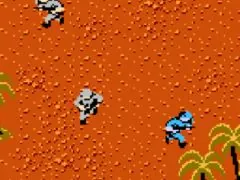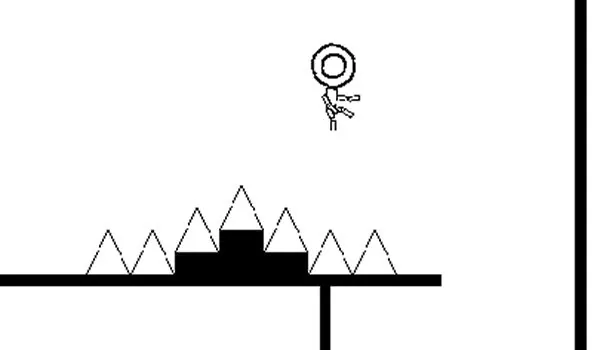AGE OF WAR
SIMILAR GAMES
Description
Age of War - GitLab Games
About Age of War - GitLab Games
Welcome to an in-depth exploration of Age of War, a captivating strategic experience brought to you through the innovative platform of GitLab Games. We delve into the core mechanics, strategic depth, and enduring appeal of this popular title, presenting a comprehensive overview designed to illuminate every facet of gameplay. Our aim is to provide an unparalleled understanding of what makes Age of War a standout in the digital strategy arena.
The Genesis and Evolution of Age of War
Age of War is not merely a game; it represents a journey through the annals of warfare and technological advancement. From its humble beginnings, the game has evolved significantly, integrating new challenges and strategic layers that keep players engaged for countless hours. We've witnessed its transformation from a straightforward concept into a complex simulation of societal and military progression. The developers have consistently focused on refining the user experience, ensuring that each iteration offers a fresh and compelling challenge. This commitment to ongoing development is a cornerstone of its sustained popularity, allowing players to discover new tactics and strategies with each update.
Core Gameplay Mechanics: Building Your Empire
At its heart, Age of War is a game of resource management, territorial expansion, and tactical combat. Players are tasked with guiding their civilization from a primitive state to a technologically advanced powerhouse. This involves carefully allocating resources such as food, gold, and manpower. The decision-making process is critical; do you invest in immediate military strength, or focus on long-term economic growth? We analyze the intricate balance required to thrive. For instance, early game decisions heavily influence late-game capabilities. Expanding your territory is crucial for securing vital resources and establishing strategic defensive positions. The map itself becomes a dynamic battlefield where every inch of ground can be contested. Understanding the optimal timing for expansion and defense is key to outmaneuvering opponents.
Resource Management: The Foundation of Power
The management of resources is arguably the most fundamental aspect of Age of War. Players must constantly monitor and optimize their acquisition and expenditure of various commodities. Gold is essential for training units and researching technologies. Food is vital for sustaining your population and army. Wood and stone might be necessary for constructing buildings and fortifications. An imbalance in any of these can lead to stagnation or even collapse. We emphasize the importance of a diversified resource strategy. Early reliance on a single resource can leave a player vulnerable to disruption. A well-rounded approach ensures resilience and adaptability. Furthermore, understanding the economic cycles and potential for resource scarcity within the game environment is a significant advantage.
Unit Production and Warfare: Strategic Deployments
The heart of Age of War lies in its dynamic warfare system. Players can train a diverse array of units, each with unique strengths, weaknesses, and attack costs. From primitive spearmen to advanced tanks and aircraft, the progression of military technology is a spectacle to behold. The strategic deployment of these units is paramount. Simply overwhelming the enemy with numbers is often not enough; understanding unit counters and formations can turn the tide of battle. We explore the different unit types and their optimal usage scenarios. For example, light, fast units might be effective for scouting and flanking maneuvers, while heavily armored units are ideal for breaking enemy lines. The cost-effectiveness of each unit also plays a significant role in strategic planning. Players must constantly evaluate the return on investment for their military spending.
Technological Advancement: The Path to Dominance
The progression through different ages is driven by technological research. Each age unlocks new units, buildings, and defensive structures, providing significant advantages over less advanced civilizations. The decision of which technologies to prioritize can dramatically alter the course of a game. Do you focus on offensive capabilities to expand rapidly, or invest in defensive technologies to secure your borders? We analyze the impact of different research paths. For example, unlocking early siege weapons can be instrumental in breaking through enemy fortifications, while advancements in economic efficiency can provide a sustainable advantage over time. The interplay between military and technological progress is a constant balancing act that defines the strategic depth of Age of War.
Navigating Through the Ages: A Developmental Journey
Age of War is structured around distinct historical ages, each representing a significant leap in human civilization and warfare. Players begin in the Stone Age, characterized by rudimentary tools and basic combat. As they progress, they advance through the Bronze Age, Iron Age, Medieval period, gunpowder eras, and ultimately into the modern and future ages. Each transition introduces new strategic considerations and challenges. The shift from melee combat to ranged weaponry, the advent of cavalry, the introduction of artillery, and eventually the development of aerial and futuristic combat units, all require players to adapt their strategies. We break down the unique characteristics of each age and the strategic shifts they necessitate.
- The Stone Age: The foundational era, focusing on survival and basic unit production.
- The Bronze Age: Introduction of early metalworking and more organized military units.
- The Iron Age: Enhanced weaponry and armor, leading to more robust armies.
- The Medieval Age: Rise of knights, siege engines, and castle warfare.
- The Gunpowder Age: The introduction of firearms and artillery, revolutionizing combat.
- The Modern Age: Tanks, aircraft, and mechanized warfare become dominant.
- The Future Age: Advanced technologies, potentially including lasers and robots, shape the battlefield.
Strategic Considerations for Each Age
Successfully navigating through these ages requires a keen understanding of the prevailing technologies and combat styles. In earlier ages, a focus on defensive structures like walls and towers can be highly effective, especially when combined with numerous basic infantry units. As gunpowder and artillery become available, the importance of mobility and flanking maneuvers increases, as static defenses become more vulnerable. The introduction of air power in later ages necessitates the development of anti-air capabilities and strategic aerial assaults. We provide insights into the optimal unit compositions and deployment strategies for each developmental stage, ensuring players are well-equipped to face the evolving challenges of warfare.
The Role of GitLab Games in Delivering Age of War
GitLab Games serves as a robust and accessible platform for experiencing Age of War. Its infrastructure is designed to provide a seamless and reliable gaming experience, allowing players to focus on strategy rather than technical issues. We appreciate the dedication of GitLab Games to fostering an environment where such engaging titles can thrive. The platform's commitment to accessibility means that players can engage with Age of War across various devices, making it a truly versatile gaming option. This accessibility is a significant factor in the game's widespread appeal, enabling a broad audience to enjoy its strategic depths.
Advanced Strategies for Mastery
For players looking to truly master Age of War, several advanced strategies come into play. These often involve subtle but impactful optimizations in resource allocation, unit composition, and timing. Understanding enemy behavior and predicting their moves is a crucial skill. We discuss the importance of scouting and intelligence gathering to stay one step ahead of opponents. Furthermore, mastering the economic trade-offs between investing in immediate military power versus long-term economic development is a hallmark of elite players. The ability to adapt quickly to unexpected enemy actions is also vital. A rigid strategy, however well-conceived, can falter in the face of dynamic opposition. We highlight techniques for efficient resource conversion, optimal unit upgrades, and timely defensive repositioning. Players who excel often develop a rhythm for their gameplay, anticipating needs and acting proactively rather than reactively. The psychological aspect of warfare, including feints and diversions, can also be a powerful tool in the hands of a skilled strategist.
Economic Warfare and Sabotage
Beyond direct combat, Age of War offers avenues for economic warfare. Disrupting an opponent's resource production or supply lines can be as effective as a direct military assault. This might involve targeting key resource-gathering structures or ambushing supply convoys. We examine the strategic benefits of such indirect attacks. An enemy starved of resources will struggle to train new units or research vital technologies, creating a snowball effect that can lead to their eventual defeat. Effective economic sabotage requires careful planning and reconnaissance to identify the most vulnerable points in an opponent's infrastructure. It's a testament to the game's depth that players can win not just through brute force, but through cunning economic manipulation.
The Art of the Counter-Attack
A well-timed counter-attack can completely dismantle an opponent's offensive momentum. This involves identifying weaknesses in their assault, preserving your own forces, and launching a decisive strike when they are most vulnerable. We discuss the principles of effective counter-offensives. Often, this means drawing your enemy into a prepared defensive position, minimizing your own losses, and then exploiting any gaps they may have created in their own defenses. The psychological impact of a successful counter-attack can be immense, demoralizing the attacking player and bolstering the defender's confidence. Mastering this aspect of warfare is crucial for sustained success.
Enduring Appeal and Community Engagement
The enduring appeal of Age of War lies in its blend of accessibility and strategic depth. It offers a satisfying progression for casual players while providing intricate challenges for seasoned strategists. The continuous engagement from the community, sharing tips, strategies, and fostering a competitive yet friendly environment, further enhances the game's longevity. We believe that the continued development and support from platforms like GitLab Games are instrumental in maintaining this vibrant ecosystem. The shared passion for the game among players creates a dynamic and evolving meta-game, where new tactics are constantly being discovered and refined.
Conclusion: Your Path to Victory in Age of War
Age of War, as presented through GitLab Games, offers a rich and rewarding strategic experience. By understanding its core mechanics, the evolution of its ages, and employing advanced strategies, players can carve their own path to victory. We encourage all aspiring commanders to delve into the intricacies of this game and discover the thrill of building and defending an empire through the ages. The journey from a primitive tribe to a global superpower is fraught with challenges, but for those who master its complexities, the rewards are immense. Remember, adaptability, foresight, and a keen understanding of warfare are your greatest allies.
Age of War - GitLab Games
About Age of War - GitLab Games
In the ever-evolving landscape of digital entertainment, the strategic depth and addictive gameplay of "Age of War" have captured the imagination of a global audience. This captivating title, prominently featured and explored by GitLab Games, invites players into a world where evolutionary strategy and resource management are paramount to survival and ultimate victory. At its core, "Age of War" is a real-time strategy game that focuses on the progression of a civilization through distinct historical ages, from the primitive Stone Age to the technologically advanced future. The objective is simple yet profoundly challenging: build an army, defend your base, and overcome your opponents by advancing your civilization faster and more effectively than they can. The GitLab Games platform serves as a hub for understanding the intricate mechanics and the sheer strategic breadth of this engaging experience, offering insights into how to master the art of warfare and lead your people to dominance.
The Core Gameplay Loop: Evolution and Domination
The fundamental appeal of "Age of War" lies in its innovative progression system. Players begin with a modest arsenal and a basic defensive structure. As they engage in combat and earn experience points, they unlock new technologies, units, and upgrades. This cyclic progression encourages a constant state of adaptation and strategic foresight. Understanding when to invest in offensive capabilities versus defensive structures is crucial. For instance, an early focus on powerful, albeit expensive, units might leave your base vulnerable to swarms of cheaper, faster attackers if not properly supported by defensive emplacements. Conversely, an overemphasis on defense can lead to stagnation, allowing opponents to outpace your technological advancements and overwhelm you with superior firepower later in the game. The GitLab Games documentation delves deeply into these strategic nuances, providing a roadmap for players looking to optimize their evolutionary path and secure a decisive advantage.
Unlocking Units: A Symphony of Strategic Choices
The vast array of units available in "Age of War" is a testament to the game's strategic complexity. From the rudimentary clubs and spears of the early ages to the advanced tanks and robots of the future, each unit possesses unique strengths, weaknesses, and attack patterns. Learning the synergies between different unit types is essential for crafting an unstoppable army. For example, deploying a squad of fast-moving infantry to flank slower, heavy-hitting units, or using ranged attackers to provide cover fire for melee units, can turn the tide of battle. The GitLab Games analysis highlights how players can effectively leverage unit composition to counter specific enemy strategies. We meticulously explore the cost-effectiveness of each unit at different stages of the game, offering guidance on building balanced and adaptable armies that can withstand diverse offensive and defensive tactics. Mastering the unit unlock tree is not merely about acquiring the most powerful units, but about understanding the optimal sequence of unlocks that supports your overarching strategy.
Early Age Dominance: The Power of the Basic Soldier
In the initial stages of "Age of War," the basic soldier, often represented by a club-wielding warrior or a spearfighter, is your primary offensive tool. While seemingly primitive, these units are incredibly cost-effective and crucial for establishing an early foothold. The ability to quickly produce and deploy them allows players to exert early map pressure, disrupt enemy resource gathering, and potentially secure vital expansion points. GitLab Games emphasizes that even in these rudimentary phases, strategic deployment is key. Grouping these soldiers and attacking in waves can overwhelm less organized defenses. Understanding the unit production cost versus damage output for these early units is a foundational skill that separates novice players from those who can consistently secure early game victories.
Mid Age Advancements: Tactical Sophistication Emerges
As players progress into the mid-game, the unit roster expands significantly, introducing more specialized and powerful options. This is where tactical sophistication truly comes into play. Units like archers, knights, and early siege weapons become available, each requiring a more nuanced approach to deployment and counter-strategy. For instance, archers excel at ranged damage but are vulnerable to direct melee engagement. Knights offer significant charge damage but can be kited by faster units. Siege weapons, while slow and expensive, can devastatingly breach enemy defenses. GitLab Games provides in-depth guides on how to effectively integrate these mid-age units into your army, emphasizing the importance of combined arms tactics. Learning to protect your ranged units with melee escorts, or using siege weapons to soften up defenses before a full assault, are critical skills for achieving mid-game supremacy.
Late Age Powerhouses: The Zenith of Technological Might
The late stages of "Age of War" are characterized by the introduction of incredibly powerful, technologically advanced units. These can include vehicles like tanks, artillery, and even futuristic robots and flying machines. These units often have significantly higher resource costs and longer production times, making their deployment a crucial strategic decision. The GitLab Games resources offer detailed breakdowns of these late-game units, analyzing their firepower, durability, and special abilities. The key to late-game success often lies in maintaining a strong economy to afford these advanced units while simultaneously defending against your opponent's own formidable forces. Understanding how to counter advanced enemy units with a carefully chosen combination of your own late-game powerhouses is the ultimate test of a player's strategic acumen.
Defensive Strategies: The Foundation of Victory
While an aggressive offense is often necessary, a robust defensive strategy is equally, if not more, important in "Age of War." The game features a variety of defensive structures, ranging from basic walls and watchtowers to advanced turrets and impenetrable bunkers. These structures serve as the first line of defense, absorbing enemy attacks and allowing your own units to engage from a position of relative safety. GitLab Games emphasizes that the placement and upgrade path of your defenses are critical. A well-placed turret can devastate incoming waves of enemies, while poorly placed walls can be easily bypassed. We explore optimal defense configurations for different enemy unit compositions and map layouts, ensuring that players can create impenetrable fortresses that withstand even the most determined assaults. Learning to anticipate enemy attack vectors and build defenses accordingly is a hallmark of a truly skilled player.
Early Game Walls and Watchtowers: Establishing Perimeter Security
In the nascent stages of "Age of War," the initial defensive focus is on establishing a secure perimeter. Basic walls serve as physical barriers, slowing down or redirecting enemy advances. Watchtowers provide early warning and allow your units to engage enemies from a safe distance. GitLab Games highlights the importance of strategically placing these early defenses to protect your primary resource generators and your base's core. A few well-placed walls can force enemies to funnel into kill zones where your own early units can easily engage them. Investing in early upgrades for these structures can significantly increase their effectiveness, making them a formidable deterrent against initial assaults.
Mid Game Turrets and Emplacements: Specialized Defensive Firepower
As the game progresses, players gain access to more specialized defensive emplacements, such as turrets and artillery cannons. These structures offer significantly more destructive power than their early-game counterparts. Understanding the strengths and weaknesses of each turret type is crucial. For instance, some turrets excel at anti-infantry combat, while others are more effective against armored units or aerial threats. GitLab Games provides detailed analyses of these mid-game defenses, offering insights into how to create layered defense systems that can deal with a variety of enemy threats. Properly positioning these emplacements to cover key approach routes and chokepoints is essential for repelling larger, more organized enemy assaults.
Late Game Fortifications and Advanced Defenses: The Unbreakable Citadel
The pinnacle of defensive strategy in "Age of War" is reached in the late game with the availability of advanced fortifications and superweapons. These can include powerful missile silos, impenetrable bunkers, and energy shields capable of absorbing massive amounts of damage. These late-game defenses are designed to be the ultimate deterrent, capable of withstanding prolonged and intense assaults. GitLab Games delves into the strategic deployment of these formidable defenses, explaining how to create an unbreachable stronghold that can protect your civilization as you launch your final offensive. The coordination of multiple advanced defense systems, coupled with the strategic placement of your most powerful late-game units, forms the bedrock of late-game victory.
Economic Management: Fueling the War Machine
Beyond the battlefield, economic management is the silent engine that drives success in "Age of War." Players must constantly balance the need to generate resources with the imperative to spend them on units, defenses, and technological advancements. The primary resource is typically represented by experience points, earned through combat and sometimes through passive accumulation. Efficiently gathering experience and making wise spending decisions are paramount. GitLab Games offers extensive guides on optimizing resource generation, understanding the cost-benefit analysis of different unit and upgrade purchases, and managing your economy to ensure a consistent supply of reinforcements and defensive capabilities. A strong economy is the bedrock upon which a powerful army is built.
Resource Generation: The Lifeblood of Your Civilization
In "Age of War," the accumulation of experience points is the primary driver for progression. This is primarily achieved through engaging in combat and defeating enemy units. However, certain game modes or variations might introduce additional resource generation mechanics, such as passive income over time or specialized resource nodes on the map. GitLab Games emphasizes the importance of aggressive early game combat to rapidly build up your experience reserves, which in turn allows for faster unlocking of new units and technologies. Understanding the experience gain rate for different actions and optimizing your gameplay to maximize this gain is a fundamental aspect of mastering the game.
Upgrade Paths: Strategic Investments for Long-Term Gains
Deciding which technologies and units to upgrade is a critical strategic decision. Upgrades often provide significant boosts to unit stats, such as increased damage, health, or attack speed, or enhance the effectiveness of defensive structures. GitLab Games provides detailed comparative analyses of various upgrade paths, helping players determine which investments will yield the greatest return for their chosen strategy. For example, investing in an upgrade that significantly boosts the damage of your primary offensive unit can allow you to overcome tougher opponents more efficiently, accelerating your progression. Conversely, upgrading your base defenses can create a secure zone from which to launch further attacks. The GitLab Games resources guide players in making these high-impact investment decisions.
Mastering the Ages: A Progression of Skill and Strategy
The journey through "Age of War" is a testament to a player's ability to adapt and evolve their strategies as their civilization advances through distinct historical periods. Each age presents unique challenges and opportunities, demanding a shift in tactical thinking and unit composition. The GitLab Games platform is dedicated to dissecting these transitions, providing players with the knowledge to seamlessly navigate each era and emerge victorious. From the primal clashes of the Stone Age to the technological warfare of the future, a comprehensive understanding of each stage is key to achieving ultimate dominion. We believe that by understanding the intricacies of each age, players can unlock their full strategic potential.
The Stone Age: Foundations of Early Conflict
The Stone Age represents the genesis of warfare in "Age of War." Players begin with rudimentary units, such as clubmen and spearmen, and basic defensive structures. The emphasis here is on resourcefulness and swarm tactics. Quickly unlocking these early units and engaging in combat is crucial to build momentum and earn the experience needed to advance to the next age. GitLab Games stresses the importance of early aggression and efficient unit production to establish a foothold and prevent opponents from gaining an insurmountable advantage. Mastering the cost-effectiveness of these early units is paramount to surviving and thriving in this foundational era.
The Bronze Age: Introducing Specialized Units
Transitioning into the Bronze Age signifies a significant leap in strategic complexity. Players gain access to a more diverse range of units, including spearmen with improved armor, rudimentary archers for ranged attacks, and possibly early cavalry units. Defensive options also become more sophisticated with the introduction of stronger walls and perhaps the first defensive emplacements. GitLab Games guides players on how to effectively combine different unit types in this era, understanding the synergies between melee, ranged, and cavalry units to form a more balanced and effective fighting force. Strategic positioning and unit counter-play become increasingly important.
The Iron Age: The Rise of Advanced Infantry and Siege
The Iron Age marks a period of significant military advancement. Players can now deploy heavily armored infantry, powerful chariots, and early siege weapons capable of breaching enemy defenses. This era demands a greater understanding of combined arms tactics. The effective use of archers to soften up enemy lines, followed by a decisive charge of armored infantry, becomes a potent strategy. GitLab Games emphasizes the importance of investing in defensive structures that can withstand the onslaught of early siege weaponry, as well as developing offensive strategies that can overcome well-defended enemy positions. The ability to outmaneuver and out-damage opponents becomes a key factor for success.
The Medieval Age: Knights, Castles, and Sophisticated Warfare
The Medieval Age brings forth the iconic knights, formidable archers, and the construction of more elaborate castles and fortifications. This era is characterized by more organized warfare and the importance of tactical positioning. Players must learn to leverage the strengths of their knights for powerful charges, use archers to control territory, and employ siege engines to dismantle enemy strongholds. GitLab Games provides in-depth strategies for siege warfare, outlining effective methods for attacking and defending fortified positions. Understanding the reinforcement cycles of units and the opportune moments to launch a decisive assault are critical skills developed during this age.
The Gunpowder Age: The Dawn of Artillery and Firearms
The Gunpowder Age revolutionizes warfare with the introduction of firearms and artillery. Musketeers, early cannons, and more advanced siege weaponry become prevalent. This era shifts the focus towards ranged combat superiority and the devastating power of explosive ordnance. Players must learn to protect their vulnerable gunpowder units from melee attackers while utilizing artillery to bombard enemy defenses from a distance. GitLab Games explores the optimal deployment of these new units, highlighting the importance of artillery support for ground assaults and the need for effective anti-infantry defenses to counter rapid advancements. The strategic use of terrain and line of sight becomes paramount.
The Industrial Age: Tanks, Airplanes, and Mass Production
The Industrial Age witnesses the emergence of tanks, early aircraft, and the concept of mass production. Military forces become larger and more mechanized. Tanks provide immense firepower and durability, while aircraft offer aerial reconnaissance and attack capabilities. This era demands a careful balance between economic output and military might. GitLab Games focuses on developing strategies for effective tank warfare, utilizing air support to gain an advantage, and defending against the increasingly sophisticated threats of the era. Understanding how to counter armored units and establish air superiority are key challenges.
The Modern Age: Advanced Armor, Helicopters, and Tactical Strikes
In the Modern Age, players command forces equipped with advanced armored vehicles, helicopters, and sophisticated artillery systems. Warfare becomes more fast-paced and tactical, with an emphasis on rapid deployment and precision strikes. Helicopters offer unparalleled mobility and support, while modern tanks and artillery provide devastating offensive and defensive capabilities. GitLab Games delves into the strategies for effectively utilizing these advanced units, emphasizing the importance of coordination between ground and air forces, and developing defenses capable of repelling modern military assaults. The ability to adapt to rapidly changing battlefield conditions is crucial.
The Future Age: Robots, Lasers, and Ultraviolent Technology
The Future Age represents the zenith of technological advancement in "Age of War." Players command powerful robotic units, deploy laser weaponry, and utilize advanced energy shields. This era is characterized by overwhelming firepower and cutting-edge defensive technologies. The sheer destructive potential of future units requires a profound understanding of strategic deployment and counter-technology. GitLab Games provides comprehensive insights into mastering these futuristic forces, focusing on how to leverage the unique abilities of robots and energy weapons to achieve absolute battlefield dominance. The ultimate goal is to outpace and overwhelm any opponent with the sheer might of future technology.
Multiplayer and Competitive Play: The Ultimate Test
For those seeking the ultimate challenge, the multiplayer and competitive play aspects of "Age of War" offer an unparalleled arena. Here, players pit their strategies and skills against human opponents from around the world. The dynamic and unpredictable nature of human opponents demands constant adaptation and a deep understanding of the game's intricate mechanics. GitLab Games serves as a valuable resource for players looking to hone their competitive edge, offering insights into meta-strategies, matchup analyses, and tips for climbing the leaderboards. Mastering the game in a competitive environment requires not only strategic prowess but also the ability to remain calm under pressure and execute complex maneuvers flawlessly. We are dedicated to helping players achieve victory in the most demanding of scenarios.
Understanding the Meta: Staying Ahead of the Curve
In any competitive game, the "meta" refers to the dominant strategies, unit compositions, and tactical approaches that are currently most effective. Staying abreast of the evolving meta in "Age of War" is crucial for competitive success. GitLab Games constantly analyzes current trends and player feedback to provide up-to-date information on the most potent strategies. We help players understand which units are currently considered the strongest, what upgrade paths are most advantageous, and what defensive setups are most resilient. By understanding and adapting to the meta, players can ensure their strategies remain competitive and effective.
Matchmaking and Ranking Systems: The Path to Improvement
The matchmaking and ranking systems in "Age of War" provide a structured environment for players to test their skills and track their progress. These systems pair players of similar skill levels, ensuring fair and challenging matches. The ranking system offers a clear indication of a player's standing within the competitive community, motivating them to improve and climb the ranks. GitLab Games offers guidance on how to effectively utilize the ranking system as a tool for self-improvement, identifying areas of weakness and focusing on strategies that can lead to consistent victories. We believe that a commitment to learning and adaptation is the key to achieving higher ranks.
Community and Esports: A Thriving Ecosystem
The vibrant community surrounding "Age of War" is a testament to its enduring appeal. Players share strategies, discuss tactics, and offer support to one another. For the most dedicated players, the emergence of esports provides a platform for professional competition and the recognition of top-tier talent. GitLab Games fosters this sense of community by providing a central hub for information and discussion. We aim to be a valuable resource for both new players looking to learn the ropes and seasoned veterans seeking to refine their competitive edge within the thriving Age of War ecosystem.
Age of War is a captivating blend of strategy and defense where players lead their civilizations through multiple eras of human history, battling against a relentless opponent determined to topple their empire. Starting in the Stone Age, players must manage their resources to train units, build defenses, and advance their civilization’s technology to progress through successive ages. Each era brings unique units and technologies, ranging from prehistoric cavemen wielding clubs to futuristic warriors armed with advanced weaponry. The game challenges players to balance offense and defense, strategically deploying units along a single battlefield lane to counter enemy forces and protect their own base.
Strategic Deployment and Technological Advancement
As players progress in Age of War, they must decide when and how to spend their resources on upgrading their capabilities and moving to the next age. Advancing through ages unlocks more powerful units and defense mechanisms, but also costs resources that could otherwise be used to deploy more units for immediate battlefield impact. Strategic timing is crucial, as players must fend off increasingly powerful waves of enemy attacks while trying to push back and destroy the enemy base. The game also features special attacks and abilities, which can be used to turn the tide of battle in critical moments, adding an additional layer of depth and strategy to the gameplay.
Age of War combines simple yet deep strategic elements with a seamless progression through historical epochs, making it a game that is easy to pick up but challenging to master. Players must constantly adapt their strategies to the evolving capabilities of their own and their opponent’s forces, making each playthrough a dynamic and engaging experience. Whether deploying dinosaurs or robots, the goal remains the same: evolve, outsmart, and conquer.
















































